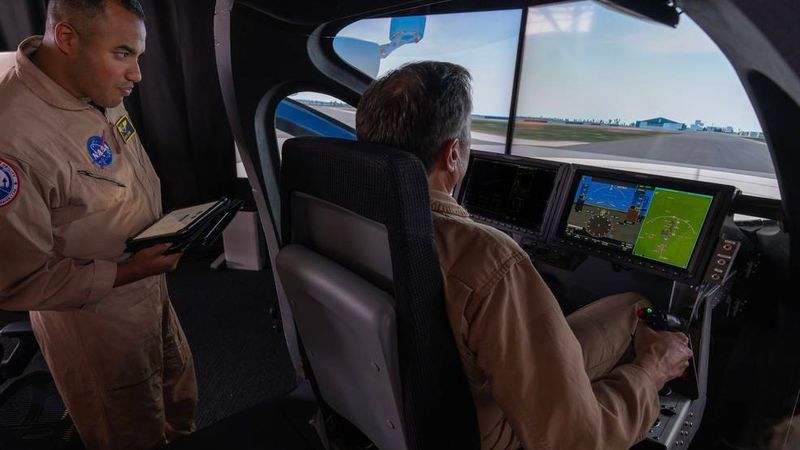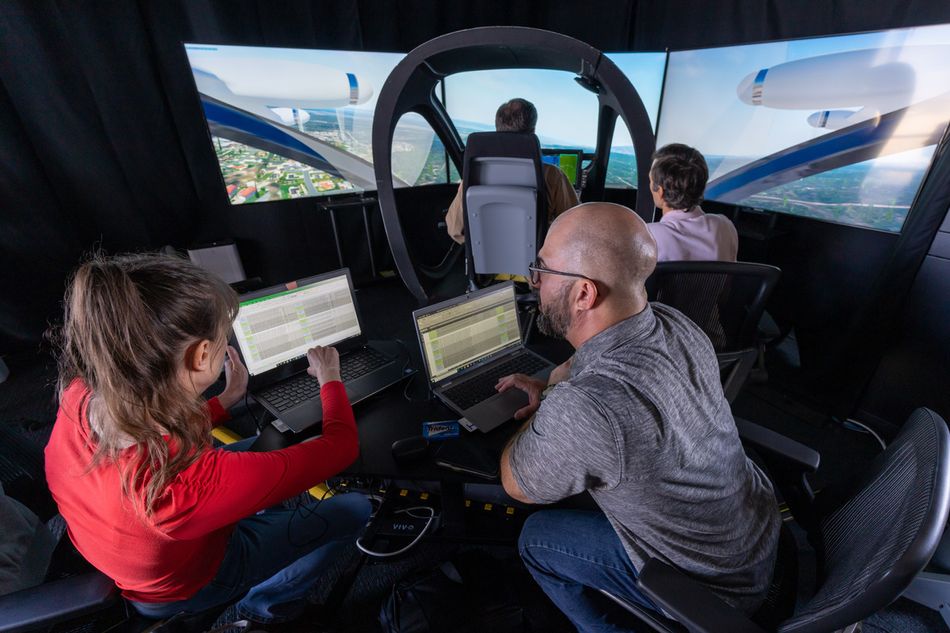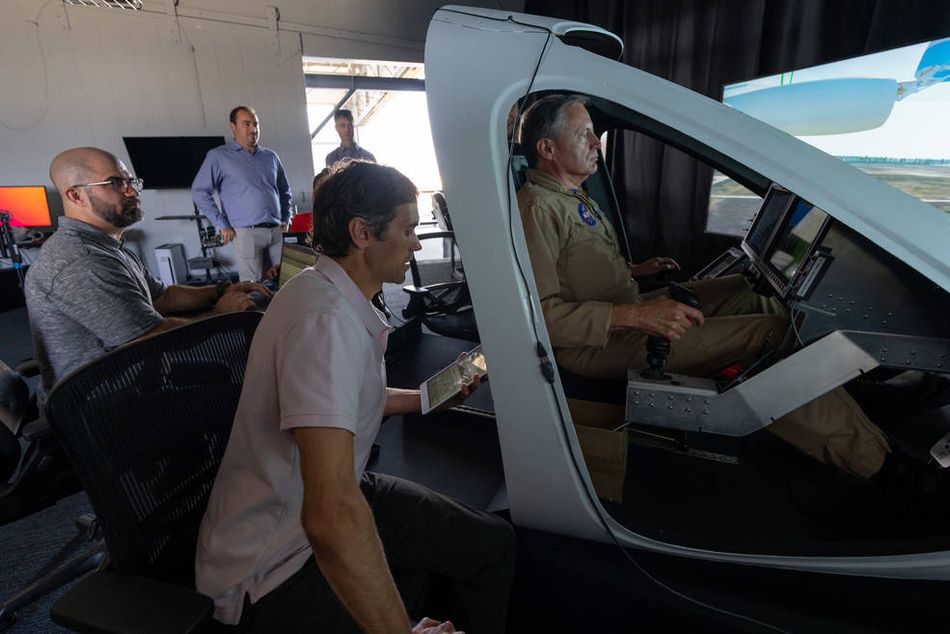On the Fly: NASA Researchers Map Air Taxi Maneuvers in Simulator
In a world that runs on data, computer simulations are among our most powerful tools for investigating any scenario. The same is true for NASA Advanced Air Mobility (AAM) researchers as they plan the future of the national airspace. Together with industry partners, these researchers are delivering the data needed to allow self-flying electric air taxis and drones to execute flight paths as easily as your phone maps your car’s route.

NASA research pilots David Zahn, left, and Wayne Ringleberg at the controls of Joby Aviation's S4 simulator entering and testing flight path data to develop navigation codes. Credits: Joby Aviation
In a world that runs on data, computer simulations are among our most powerful tools for investigating any scenario. The same is true for NASA Advanced Air Mobility (AAM) researchers as they plan the future of the national airspace. Together with industry partners, these researchers are delivering the data needed to allow self-flying electric air taxis and drones to execute flight paths as easily as your phone maps your car’s route.
Pilots and flight engineers with NASA’s AAM National Campaign are collaborating with Joby Aviation on a series of flight test simulations in Joby’s vehicle simulator. The reference data they gather will provide insight into how these vehicles will fly in the airspace and help develop potential departures, approaches, missed approaches, and mid-flight waypoints.
Integrating these in-flight maneuvers – which are used by aircraft to take off, land, and avoid hazards and each other – into AAM operations is one of several developmental efforts necessary to allow these vehicles to safely enter the airspace.
Four NASA research pilots have flown the Joby simulator, which includes joystick controls, avionics, and performance modeling that duplicate the feel of flying Joby’s S4 air taxi. The tests involve flying the simulator along designated route waypoints, collecting data to analyze which maneuvers are best for obstacle avoidance, route efficiency, passenger comfort, and noise.
The simulations also experiment with a new flight path concept NASA research pilots call a deproach, in which a vehicle can fly in multiple directions as it travels to and from its starting point and adapt beyond its designated flight path if it needs to respond to air restrictions.
In this way, the deproach could address the need for AAM vehicles to be able to operate flexibly at low altitudes while conserving airspace.
“You can think of a deproach as a circular traffic profile which consolidates departure, approach, and missed procedures in a way current airspace models don’t account for,” said David Zahn, a NASA pilot leading the project’s Joby simulator work. “The ability to explore this new model and help streamline the process of reaching specific vertiports is an example of the value of these simulations.”
Alongside fine-tuning this procedure, the simulation test data will establish basepoints of altitude, maneuverability, and ride quality for future tests and ultimately help identify the most successful operating practices for these vehicles.
NASA’s research pilots and engineers are also using the data to produce autopilot code and navigation information specific to air taxis for airborne navigation system databases. This code has been built in collaboration with the FAA, whose representatives were present at the tests as part of the two agencies’ broader partnership on AAM.
NASA is bringing its aeronautical expertise to this new industry, combining these simulations with other research tools like virtual airspace tabletop exercises and surrogate vehicle test flights. Data and results from these efforts will be released to the public in the form of a series of technical papers, assisting the industry in moving forward.

